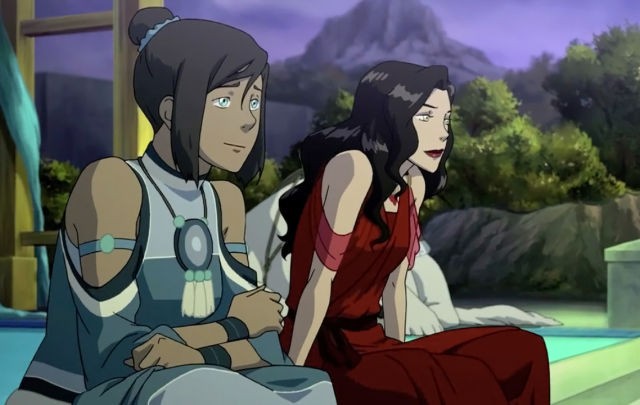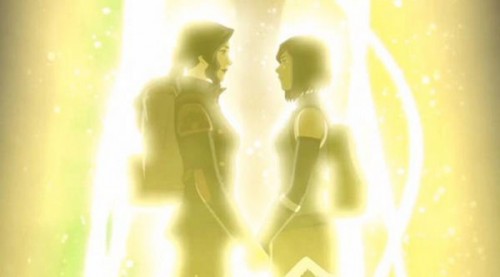The Legend of Korra searches for balance in it’s final episodes

‘The Legend of Korra’ delivers action, tears, and closure to a beloved series but will it live up to fan’s high standards and earn its legendary status?
Ten years, seven seasons, fifty-six hours, and one terrible live action adaptation … now we’re here at the end of the avatar’s world — no not the “Dances with Smurfs” one. The world of Avatar: The Last Airbender is no more, at least for the foreseeable future. After three seasons of the original Avatar, many wondered if their follow-up, set seventy years after the first series, would be as well-done or as well-received by the viewing public. While not as consistently great as its parent series, The Legend of Korra had many moments that were well deserving of its lineage.
It’s a shame that such a well done piece of animation failed to find the number or quality of audience that Nickelodeon was hoping for. If it had, the last year could have gone much differently. After moving to streaming online only, scaring fans that the show would end without a proper finale, Nickelodeon moved the show back to airing for the end of the season just as suddenly.
After all that drama, it came out in the press that the budget for the final season was slashed heavily. To the point that one episode of the final season would be a clip show. Luckily the writers were clever enough to take this setback and give us an especially funny episode, albeit one with practically no plot or character development.
It’s doubtful the executives at Nickelodeon knew what they were doing when it came to Korra. Lucky for us the creative team behind the show kept their focus on getting us to the end of their story. Season four (or Book 4 as it’s called) was titled “Balance.” As such, the series explored several variations on the term: Work and family, spirituality and the physical, war and peace, along with love and duty were all running themes this year. The two-part finale did an amazing job at addressing each of these over a forty-five minute run time.
The finale started with Kuvira, a powerful and charismatic leader, poised to take over Republic City. To do so, she has a giant mech equipped with a spirit-powered super weapon. Seeing the rows of soldiers with her at the helm invokes tones of World War II. The use of a weapon of mass destruction not only invokes images of Hiroshima but modern acts of terror as well. The show has smartly strayed from turning Kuvira into a one-note villain, instead juxtaposing her intentions with Korra’s. They both are strong women who feel driven to an end: they both want a world at peace … but their views on achieving this balance are vastly different. A big arc this season was for Korra to look at her enemies, to see their similarities rather than their differences. Every antagonist she has faced had a quality that mirrors something inside of her.
Once the action begins, the episode really takes off. Throughout the good and the bad of this show one thing has always stood true: the action scenes are phenomenal. The way the fight scenes are choreographed and presented is some of the best action in any medium, not just animation. They lead you down a path where as a viewer you would ask yourself “why they don’t use a certain ability or tool at their disposal”, the next second they do just that. Instead of building roadblocks out of characters stupidity, as many shows do, they have smart, creative characters whose conflicts feel organic. Team Avatar joining forces, using a multilateral attack of ground and air-based abilities is a great culmination to all the battles we’ve seen. It would have been nice to see more of the new Air Nomads at this point to really hammer home that the air nation is back in full swing, but understandably they wanted to keep the focus on our main group.
Korra gets one more talk with her teacher Tenzin; they have a heart to heart, demonstrating they have helped one another grow. Their dynamic is what drove the first season … now at the end we see that master and student view each other as equals. Neither one is above the other; balance once again.
For the last few minutes of the show the writers finally address the big issue that has sparked fan discussion since book two: the Mako/Korra/Asami relationship. Since day one, Mako and Korra never gelled the way they were intended to. It was obvious they were trying to capture a little of the Aang/Katara romantic magic of the first series, but it never felt right. Conversely, the friendship between Korra and Asami felt natural. It grew out of something organically. The last words we hear Mako tell Korra are platonic: “I’ll follow you into battle no matter how crazy things get, I’ve got your back and I always will.” These aren’t the words of someone in love, but those of a dear friend. In this moment the show finally lets go of the idea that Korra and Mako are romantically linked; instead they’re comrades, soldiers in arms, but not in love.
Fittingly, we see Korra and Asami together one last time. They talk about their regrets, say their apologies to one another, then decide to go off on a vacation together into the spirit world for an indefinite time. In probably the most beautiful moment of the series, they walk hand in hand into a spirit portal, turn in to face each other, look into each others eyes … and vanish. Many fans (including this one) have hoped against all odds that this same-sex pairing would be allowed to happen on a Nickelodeon animated show. It would be a safe bet there is probably a version of this episode’s script where they embraced or kissed in the end. By leaving it vague yet so assuredly true, the writers manage to show us a beautifully realized romance while still leaving enough deniability for those unready to deal with it.
Korra managed to bring peace to the world as well as find love in an unexpected place along the way. This season was about balance, it delivered on every front: a unique, smartly written story with beautiful animation, amazing action, and memorable characters. These are the ways Korra became a legend.
 CliqueClack
CliqueClack
“In the time before the Avatar, we bent not the elements, but the energy within ourselves.”
That was that the Lion Turtle told to Aang, that was what Aang used to defeat the Fire Lord, and to take the bending away from Yakkone.
That was what Korra used to gave back her powers to Lin, to free the souls of the people captured by the spirits vines from the spirit world, and THAT was what Korra used to block the “spirit ray” and save Kuvira.